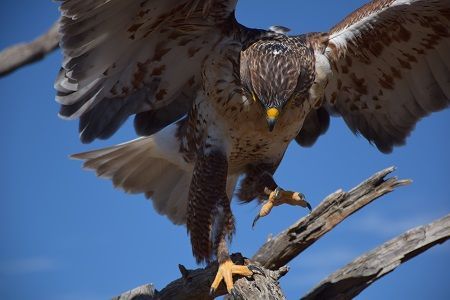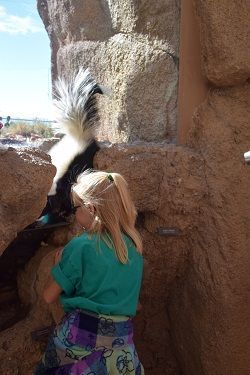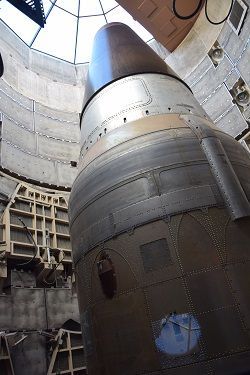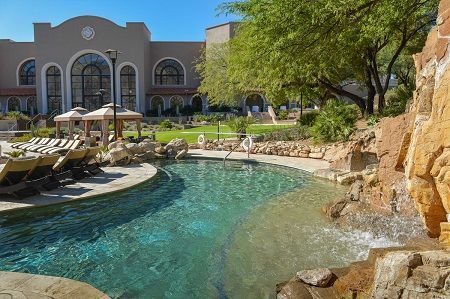Article
Arizona in the Spring (Part 1): Tucson
Author(s):
Spring, when the Sonoran desert blooms, is a great time to visit Arizona. In the morning play golf on world-class courses or explore the desert. In the afternoon when temperatures rise, go indoors to visit museums, browse art galleries, and get pampered at the region’s noted spas.
Editor's Note: This article is the first of a two-part series on Arizona in the Spring. Check back next Thursday for Part 2.

Spring, when the Sonoran desert blooms, is a great time to visit Tucson and Phoenix. In the morning play golf on world-class courses or explore the desert. In the afternoon when temperatures rise, go indoors to visit museums, browse art galleries, and get pampered at the region’s noted spas. Spring also comes with another bonus: resort rates lower than those for winter’s high season.
In Tucson and the Phoenix/Scottsdale area, 15-foot tall saguaro cacti with their upended arms seem to wave you into the rich landscape of boulders, cacti, sagebrush, and feathery palo verde trees. At 2,400 feet above sea level, Tucson’s average temperature is 10 degrees cooler than temperatures in Phoenix.
Here are some of Tucson’s top attractions, well-known and less-visited, as well as great choices for dining and lodging.
TUCSON

Discover the Desert: Arizona-Sonora Desert Museum
Part zoo, part botanical garden, and part aquarium, the mostly outdoor facility sprawls on 97 acres, of which 47 acres are interpreted. Walk through the grasslands to see prairie dogs, burrowing owls, and rattlesnakes. In Cat Canyon look for ocelots, bobcats, grey fox, and porcupines. Find out how the desert blooms by watching butterflies land on milkweed and see hummingbirds pollinate plants. The highlight: the Raptor Free Flight, offered daily October through April. A raven, great horned owl, prairie falcon, and hawk swoop low over your head before landing on perches to grab food. You can almost feel the birds’ feathers in your hair.

Launch a Nuclear Warhead: Titan Missile Museum
The Titan Missile Museum, a.k.a. complex 571-7, is the only preserved Titan II missile site in the US and it’s open to the public. Located in the Green Valley area south of Tucson, the Titan Missile Museum’s tour starts with the film “Peace through Deterrence,” a summation of the US’s Cold War strategy. Afterward, you descend 35-feet underground, see the crew’s quarters, walk by the rocket, and enter the facility’s

control room, equipped with the latest in 1950s technology—a dot-matrix printer and a switchboard-like console. One person in your group serves as commander, tasked with following the required protocols. A static-filled radio message delivers a sequence of codes that the commander must match to the ones stored in the Emergency War Order Safe in order to verify that the launch was requested by the president. The Titan Missile carrying a nine-megaton nuclear warhead would deploy in 58 seconds, arriving at its target 6,300 miles away in 30 minutes. World War III would have begun. Fortunately, the Titan never launched, although a team manned the site from 1963 to 1987.
See Historic Aircraft: Pima Air and Space Museum
Just outside town the facility features some 300 vintage and contemporary aircraft. Even if you can't tell a Cessna Skymaster from a Lockheed Neptune or a Learjet, all of which are on display, you'll be impressed with these flight legends. Particularly interesting are the vintage WWII planes, including gliders, and bombers. The B-24 bomber on display still has its cover girl art, a smiling pin-up underneath "Shoot You're Covered." Many people come to have their pictures taken next to planes their grandfathers or great-grandfathers once flew.
Stroll Through History: Presidio Historic District,
Grab a Turquoise Trail brochure and follow the turquoise line painted on the sidewalks to explore Tucson’s oldest neighborhood, established in 1775 when the Spanish built a fort. Stroll past Spanish-Mexican 19th century adobe houses, boutiques, and restaurants. The Presidio also contains five structures of the Tucson Museum of Arts Historic Block. Some serve as classrooms, another showcases American Arts and Crafts furniture, and others house Western Art or Pre-Columbian and Mexican folk art.
Restaurants and Resorts
Located in Tucson’s Presidio district, El Charro has been serving Mexican food at the adobe house on North Court since 1922. Along with tacos, enchiladas, hand-made tamales, and churros, the café accommodates low-cal lovers with large salads and non-meat eaters with vegan burritos and enchiladas.
Among the Congress Street corridor’s trendy restaurants are Chef Janos Wilder’s Downton Kitchen & Cocktail which offers a savory mix of French and modern Southwest cuisines.

Nestled at the base of the Santa Catalina Mountains, The Westin La Paloma Resort & Spa offers a well-equipped desert oasis. Play through 27 holes of golf, swim in five pools and savor a soothing massage at the Elizabeth Arden Red Door Spa. Azul’s farm-to-fork Southwestern-inspired cuisine makes the restaurant a popular Tucson choice. The Westin Kids Club operates daily for ages 6 months through 12 years. The property, prettily landscaped with saguaro cacti, mesquite trees, and desert wild flowers, conveys a sense of place.
All photos by the author.




